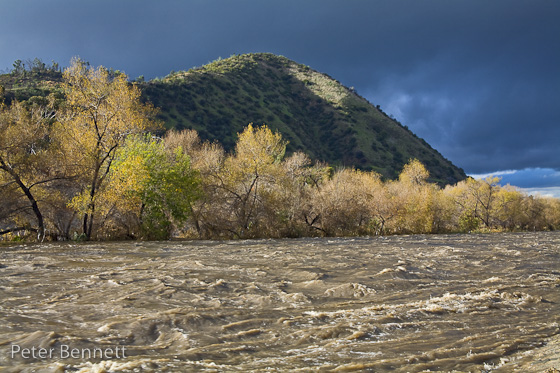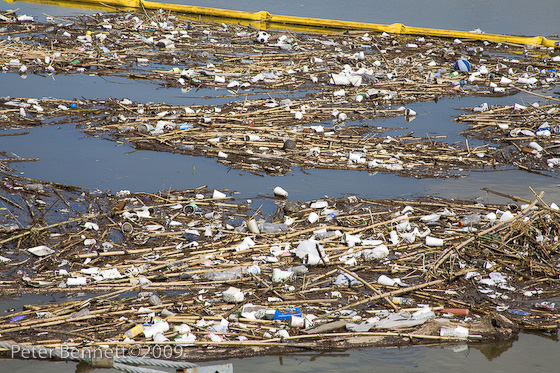The Winter Rains
Last Winter's rains here in Los Angeles provided an opportunity for me to photograph something I have been interested in for a while, the difference between the normal river flow and the urban runoff created by major rainstorms. The contrast can be quite dramatic.
First a little background. The Los Angeles River is probably most famous for being in movies like Terminator, Them and a host of other films that made use of its paved banks for dramatic car chases and such. Some people don’t even realize that it is a real river, but the first settlers to Los Angeles made their encampments along the banks of the river, that is until the first rainy season, when the river flooded their camp and the rising waters of the river did what they have always done, drain the Los Angeles Basin after a rainstorm and charge down the river to empty into the sea at what is now Long Beach and Playa Del Rey. In the thirties, the floods got so bad they destroyed many homes and buildings near the river, which eventually led the Army Corps of Engineers to pave the river in order to help the waters rush out to the sea faster with less risk of flooding. A good idea for the thirties perhaps, but in a time when we spend untold amounts of money and energy to pump water over hills and valleys all the way from the Sacramento Delta for drinking and irrigation, it makes little to no sense. So much of our rainwater could be captured and used for irrigation and other greywater uses.
Although the before and after shots of the Ballona Creek were taken on different days, I watched over a 45 minute rainy span, the waters go from a gentle flow to the raging waters that you see in the picture.
I have seen images of the LA River during rains on television, usually involving a dog being rescued or such, but I was unprepared to see it up close. Paths along the banks that I had strolled along were completely covered by the torrent, and although the color of the LA River is not what I would normally call crystal clear, after the rains it is brown, mucky, sludgy brown.
Did I mention the garbage? If you stand on a bridge above the river, you can see a steady stream of plastic bags, styrofoam cups and an assortment of nasty looking debris that only minutes before had been lying peacefully on some Los Angles street minding its own business. They don’t call it urban runoff for nothing! If you ever wondered why the Pacific Ocean is filled with so much garbage, plastic and other junk, it all starts on some street in LA, Tokyo or other populated Pacific rim location, where the litter that humanity lazily disposes of, waits patiently for the rains to come and send it along its merry way down the storm drains and pipes, and eventually to the river or some other channel that leads to the ocean.
I went down to the mouth of the LA River in Long Beach after the first rain of the season last October where there is a garbage boom that attempts to collect as much floating debris as it can before it heads out to sea. After the first major storm of the season, the boom may collect over 50,000 pounds of trash. But if that is what it catches, one can only imagine how much it doesn’t catch.
As a photographer I am attracted to power and beauty, the LA River and Ballona Creek have an abundance of both despite some of the ugliness. But that ugliness is not theirs, the rivers are simply the repositories of our neglect and short-term thinking. There are many efforts to clean up the LA River and some long range plans to revitalize it. In future posts I will show some of the places where the LA River is still in its unpaved natural state. If we can someday bring the rest of the river back to this state, never again will anyone wonder if the LA River is in a fact a real river, it will be evident to all.




